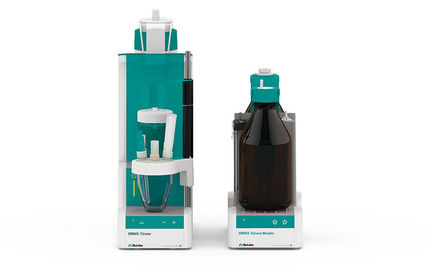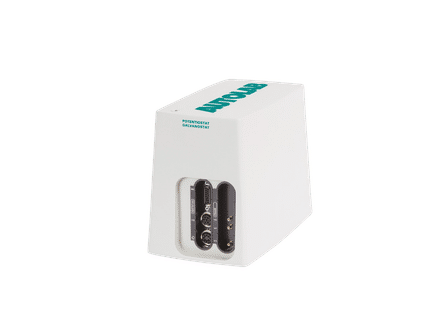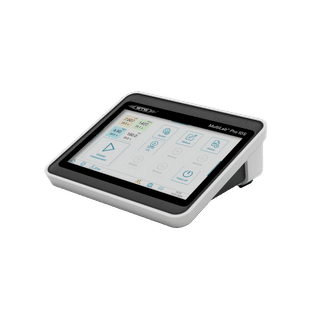|
|
| major histocompatibility complex, class II, DR53
|
| Haplotypes
| DRA*01:DRB4*0101 DRA*01:DRB4*0102 DRA*01:DRB4*0103 DRA*01:DRB4*0104
|
| Structure (See HLA-DR)
|
| Identifiers | alpha *0101
|
| Symbol(s)
| HLA-DRA
|
| EBI-HLA
| DRA*0101
|
| Identifiers | beta 4 *0101 *0102 *0103 *0104
|
| Symbol(s)
| HLA-DRB4
|
| EBI-HLA
| DRB4*0101
|
| EBI-HLA
| DRB4*0102
|
| EBI-HLA
| DRB4*0103
|
| EBI-HLA
| DRB4*0104
|
| Shared data
|
| Locus
| chr.6 6p21.31
|
HLA-DR53 is an HLA-DR serotype that recognizes gene products of HLA-DRB4 locus. There are 13 alleles at this locus that encode 7 proteins.
DRB3, DRB4, and DRB5 are minor DR beta encoding loci, they have been recognized as having distinct evolution.[1] and the DRB4 locus presence is linked to HLA-DR7 seropositivity. The DRB4*locus was apparently duplicated from an ancestor of the DRB1-DRB4 common locus around 5 million years ago.[2]
DRB4 locus is only apparent in a small subset of DQ haplotypes, and most individuals lack DRB4. In addition the level of normal expression is 8 fold lower than the DRB1 in cells which can express both.[3] and lowered because of both transcriptional and post-transcriptional regulation[4].
Alleles
DR53 recognition of some DRB4* alleles[5]
| DRB4* | DR53
| ? | Sample
|
| allele | % | % | size (N)
|
| 0101 | 95 | | 38
|
| 0103 | 89 | | 49
|
DR53 reactive alleles: DRB4*0101, *0103
Unknown reactivity: *0102, *0104 to *0107
Null alleles: *0101102N, *01030102N, *0201N, *0301N
Associated diseases
DRB4*01 is positively associated with Erythema multiforme,[6] Crohn's disease,[7] myasthenia gravis,[8] rheumatoid arthritis[9] Hashimoto's thyroiditis, [10] vitiligo, [11] primary biliary cirrhosis,[12] clozapine-induced agranulocytosis,[13] Vogt-Koyanagi-Harada disease,[14]
HLA-DRB1 linkage
HLA-DR53 serotypes (HLA-DRB4) is linked to the following HLADR serotypes (HLA-DRB1) allele groups:
HLA-DR7 - DRB1*07
HLA-DR9 - DRB1*09
References
- ^ Gorski J, Rollini P, Mach B (1987). "Structural comparison of the genes of two HLA-DR supertypic groups: the loci encoding DRw52 and DRw53 are not truly allelic". Immunogenetics 25 (6): 397-402. PMID 3596674.
- ^ Gyllensten U, Sundvall M, Ezcurra I, Erlich HA (1991). "Genetic diversity at class II DRB loci of the primate MHC". J. Immunol. 146 (12): 4368-76. PMID 2040804.
- ^ Stunz LL, Karr RW, Anderson RA (1989). "HLA-DRB1 and -DRB4 genes are differentially regulated at the transcriptional level". J. Immunol. 143 (9): 3081-6. PMID 2809218.
- ^ Leen MP, Gorski J (1996). "Differential expression of isomorphic HLA-DR beta genes is not a sole function of transcription". Hum. Immunol. 50 (2): 111-20. PMID 8891734.
- ^ derived from IMGT/HLA
- ^ Lepage V, Douay C, Mallet C, et al (1988). "Erythema multiforme is associated to HLA-Aw33 and DRw53". Tissue Antigens 32 (3): 170-5. PMID 3217933.
- ^ Kobayashi K, Atoh M, Yagita A, et al (1990). "Crohn's disease in the Japanese is associated with the HLA-DRw53". Exp. Clin. Immunogenet. 7 (2): 101-8. PMID 2322470.
- ^ Morita K, Moriuchi J, Inoko H, Tsuji K, Arimori S (1991). "HLA class II antigens and DNA restriction fragment length polymorphism in myasthenia gravis in Japan". Ann. Neurol. 29 (2): 168-74. doi:10.1002/ana.410290209. PMID 1672809.
- ^ Morling N, Andersen V, Fugger L, et al (1991). "Immunogenetics of rheumatoid arthritis and primary Sjögren's syndrome: DNA polymorphism of HLA class II genes". Dis. Markers 9 (5): 289-96. PMID 1686751.
- ^ Terauchi M, Yanagawa T, Ishikawa N, Ito K, Fukazawa T, Maruyama H, Saruta T (2003). "Interactions of HLA-DRB4 and CTLA-4 genes influence thyroid function in Hashimoto's thyroiditis in Japanese population.". J Endocrinol Invest 26 (12): 1208-12. PMID 15055474.
- ^ Zamani M, Spaepen M, Sghar S, Huang C, Westerhof W, Nieuweboer-Krobotova L, Cassiman J (2001). "Linkage and association of HLA class II genes with vitiligo in a Dutch population.". Br J Dermatol 145 (1): 90-4. PMID 11453913.
- ^ Shimoda S, Nakamura M, Ishibashi H, Hayashida K, Niho Y (1995). "HLA DRB4 0101-restricted immunodominant T cell autoepitope of pyruvate dehydrogenase complex in primary biliary cirrhosis: evidence of molecular mimicry in human autoimmune diseases.". J Exp Med 181 (5): 1835-45. PMID 7536796.
- ^ Corzo D, Yunis J, Salazar M, Lieberman J, Howard A, Awdeh Z, Alper C, Yunis E (1995). "The major histocompatibility complex region marked by HSP70-1 and HSP70-2 variants is associated with clozapine-induced agranulocytosis in two different ethnic groups.". Blood 86 (10): 3835-40. PMID 7579351.
- ^ Kobayashi H, Kokubo T, Takahashi M, Sato K, Miyokawa N, Kimura S, Kinouchi R, Katagiri M (1998). "Tyrosinase epitope recognized by an HLA-DR-restricted T-cell line from a Vogt-Koyanagi-Harada disease patient.". Immunogenetics 47 (5): 398-403. PMID 9510558.
|







